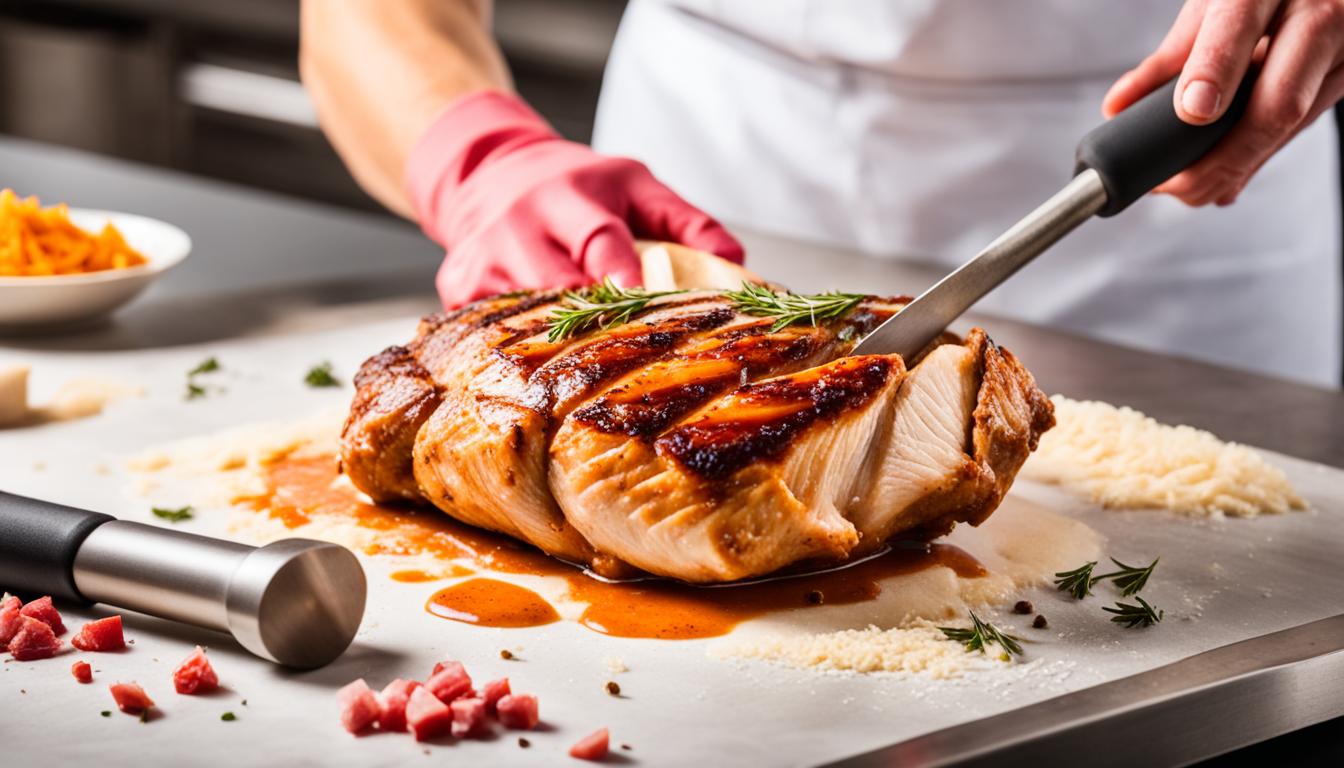When it comes to cooking chicken breasts, have you ever wondered why pounding them is a necessary step? Is it just a culinary tradition or a secret technique to achieve perfectly cooked, tender meat? The Food Lab has the answers to all your cooking questions, including why pounding chicken breasts is a game-changer in the kitchen.
Pounding chicken breasts serves multiple purposes, and it’s not just about making them thinner. Yes, pounding ensures even cooking by flattening out the uneven thickness of the breasts. But did you know that it also leads to juicier results? When meats cook evenly, they retain more moisture, resulting in a succulent and flavorful dish. The Food Lab will show you how this simple technique can elevate your chicken recipes to the next level.
But that’s not all. Pounding chicken breasts also helps to tenderize the meat, resulting in a more tender texture. By breaking up the muscle fibers, you can achieve a melt-in-your-mouth experience that will impress even the most discerning palate.
So, why pound your chicken breasts? Is it just another kitchen hack, or does it have a scientific basis? Let’s delve into the world of food science experiments and culinary queries with the Food Lab to uncover the real reason behind pounding chicken breasts and ensure your next dish is a culinary masterpiece.
The Science behind Pounding Chicken Breasts
When it comes to preparing chicken breasts, understanding the science behind pounding can help you achieve perfect results in the kitchen. Pounding chicken breasts is not only a culinary technique but also a food science experiment that affects the texture and cooking process of the meat.
When you pound a chicken breast, you physically reduce its thickness. This has a profound effect on the cooking process. By flattening the meat, you create a more even surface area, allowing heat energy to transfer more quickly. As a result, the chicken cooks faster and reduces overall cooking time, making it a valuable technique for busy cooks.
Contrary to popular belief, pounding the chicken breast actually helps it retain more moisture. The thinner meat creates less space for a temperature differential gradient to develop within the meat during cooking. This means that the chicken breast cooks more evenly, resulting in a juicier end result.
Additionally, pounding mechanically tenderizes the meat by breaking up the muscle fibers. This tenderizing effect creates a more desirable texture, making the chicken breast more enjoyable to eat.
To visually understand the impact of pounding chicken breasts, consider this image:
The image showcases the physical transformation that occurs when chicken breasts are pounded. It visually represents the scientific principles at play, allowing you to appreciate the technique’s impact on texture and cooking.
Overall, understanding the science behind pounding chicken breasts can elevate your cooking skills and help you achieve consistently delicious results in the kitchen. Armed with this knowledge, you can confidently tackle culinary queries and experiment with different cooking techniques. So the next time you find yourself asking, “Why do I pound my chicken breasts?” you’ll have the food science explanation that supports your kitchen experiments.
Optimal Cooking Temperatures for Chicken Breasts
When it comes to cooking chicken breasts, it’s important to cook them to a safe internal temperature to reduce the risk of foodborne illness. The USDA recommends cooking poultry, including chicken, to an internal temperature of 165°F (74°C).
However, sous vide cooking methods allow for cooking chicken breasts at lower temperatures while still ensuring food safety. The Food Lab recommends cooking chicken breasts sous vide at temperatures ranging from 140°F (60°C) to 150°F (66°C). Cooking chicken at these lower temperatures results in juicier, more tender meat.
It’s important to note that cooking times will vary depending on the thickness of the chicken breasts, and it’s always recommended to use a food thermometer to ensure the meat reaches the desired temperature.
